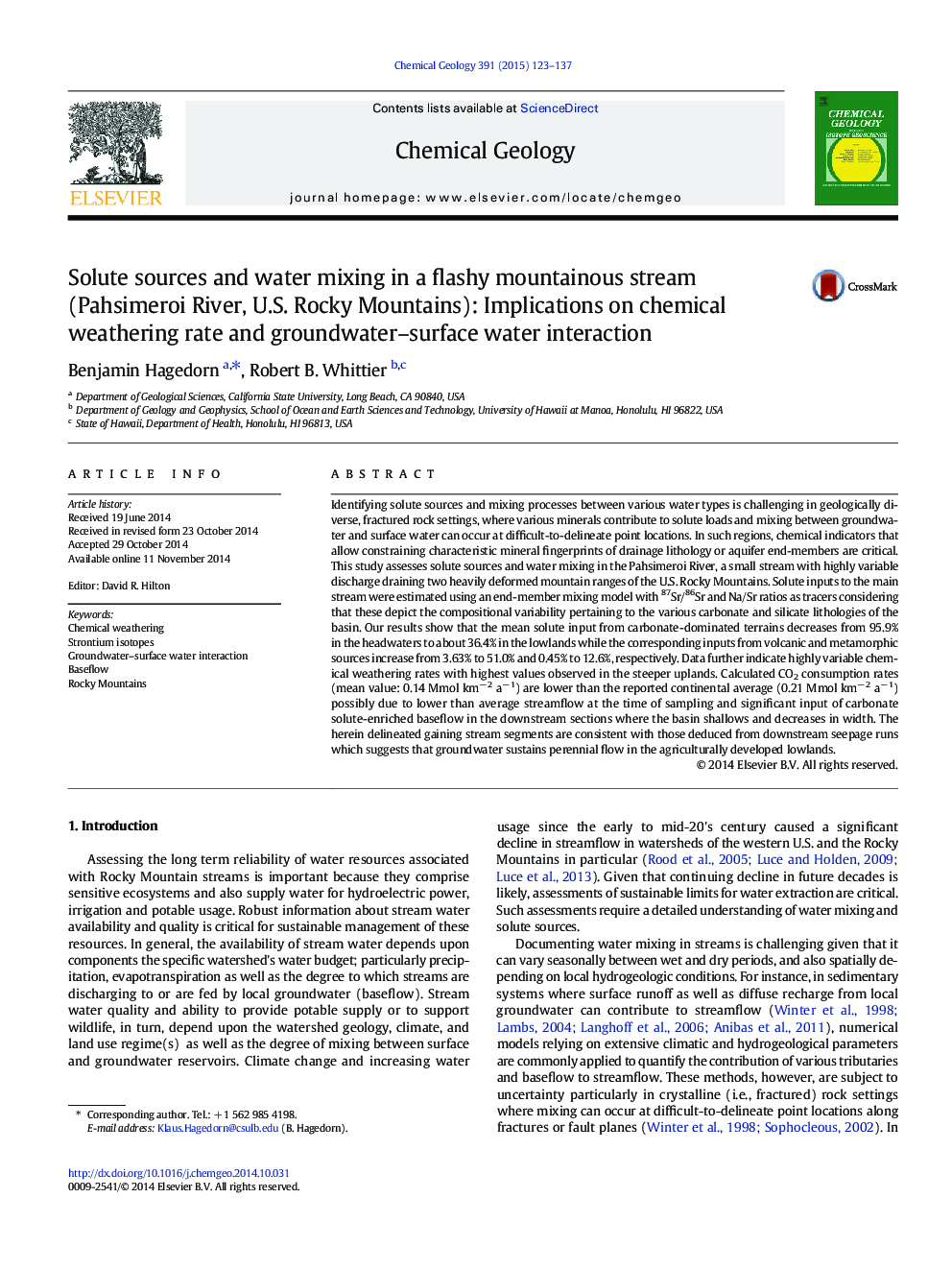| Article ID | Journal | Published Year | Pages | File Type |
|---|---|---|---|---|
| 4698628 | Chemical Geology | 2015 | 15 Pages |
•We document solute sources and water mixing in a diverse, fractured rock basin.•We quantify the contribution of various sub-catchments to streamflow.•We assess uncertainty of silicate weathering CO2 consumption estimates.•We distinguish gaining from losing stream segments.
Identifying solute sources and mixing processes between various water types is challenging in geologically diverse, fractured rock settings, where various minerals contribute to solute loads and mixing between groundwater and surface water can occur at difficult-to-delineate point locations. In such regions, chemical indicators that allow constraining characteristic mineral fingerprints of drainage lithology or aquifer end-members are critical. This study assesses solute sources and water mixing in the Pahsimeroi River, a small stream with highly variable discharge draining two heavily deformed mountain ranges of the U.S. Rocky Mountains. Solute inputs to the main stream were estimated using an end-member mixing model with 87Sr/86Sr and Na/Sr ratios as tracers considering that these depict the compositional variability pertaining to the various carbonate and silicate lithologies of the basin. Our results show that the mean solute input from carbonate-dominated terrains decreases from 95.9% in the headwaters to about 36.4% in the lowlands while the corresponding inputs from volcanic and metamorphic sources increase from 3.63% to 51.0% and 0.45% to 12.6%, respectively. Data further indicate highly variable chemical weathering rates with highest values observed in the steeper uplands. Calculated CO2 consumption rates (mean value: 0.14 Mmol km− 2 a− 1) are lower than the reported continental average (0.21 Mmol km− 2 a− 1) possibly due to lower than average streamflow at the time of sampling and significant input of carbonate solute-enriched baseflow in the downstream sections where the basin shallows and decreases in width. The herein delineated gaining stream segments are consistent with those deduced from downstream seepage runs which suggests that groundwater sustains perennial flow in the agriculturally developed lowlands.
